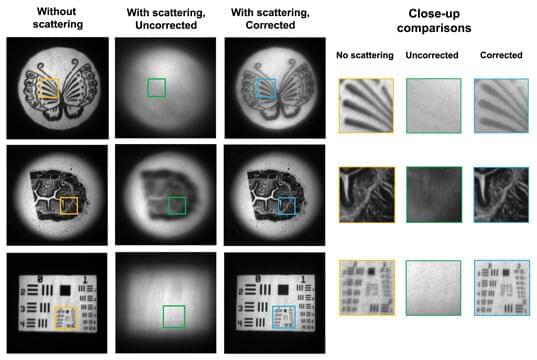Engineers from Rice University and the University of Maryland have created full-motion video technology that could potentially be used to make cameras that peer through fog, smoke, driving rain, murky water, skin, bone and other media that reflect scattered light and obscure objects from view.
“Imaging through scattering media is the ‘holy grail problem’ in optical imaging at this point,” said Rice’s Ashok Veeraraghavan, co-corresponding author of an open-access study published today in Science Advances. “Scattering is what makes light—which has lower wavelength, and therefore gives much better spatial resolution—unusable in many, many scenarios. If you can undo the effects of scattering, then imaging just goes so much further.”
Veeraraghavan’s lab collaborated with the research group of Maryland co-corresponding author Christopher Metzler to create a technology they named NeuWS, which is an acronym for “neural wavefront shaping,” the technology’s core technique.










Comments are closed.